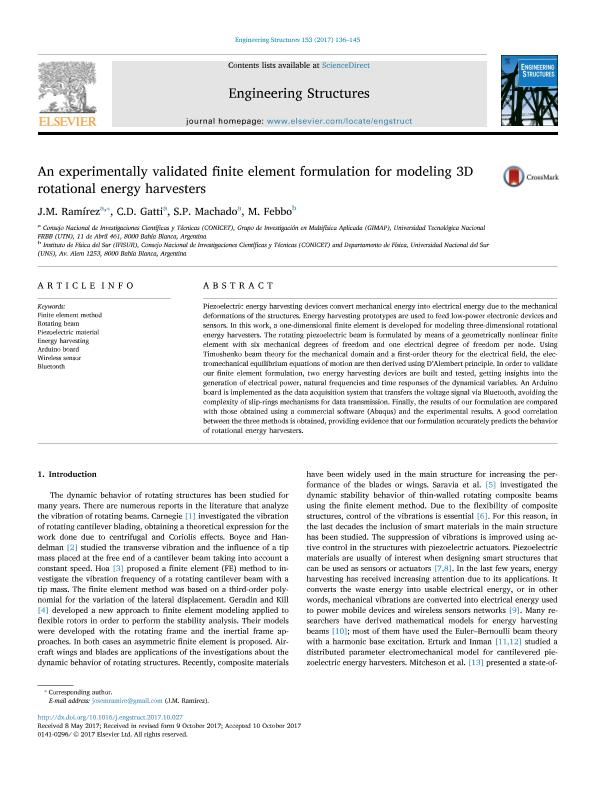Artículo
An experimentally validated finite element formulation for modeling 3D rotational energy harvesters
Fecha de publicación:
15/12/2017
Editorial:
Elsevier
Revista:
Engineering Structures
ISSN:
0141-0296
Idioma:
Inglés
Tipo de recurso:
Artículo publicado
Clasificación temática:
Resumen
Piezoelectric energy harvesting devices convert mechanical energy into electrical energy due to the mechanical deformations of the structures. Energy harvesting prototypes are used to feed low-power electronic devices and sensors. In this work, a one-dimensional finite element is developed for modeling three-dimensional rotational energy harvesters. The rotating piezoelectric beam is formulated by means of a geometrically nonlinear finite element with six mechanical degrees of freedom and one electrical degree of freedom per node. Using Timoshenko beam theory for the mechanical domain and a first-order theory for the electrical field, the electromechanical equilibrium equations of motion are then derived using D'Alembert principle. In order to validate our finite element formulation, two energy harvesting devices are built and tested, getting insights into the generation of electrical power, natural frequencies and time responses of the dynamical variables. An Arduino board is implemented as the data acquisition system that transfers the voltage signal via Bluetooth, avoiding the complexity of slip-rings mechanisms for data transmission. Finally, the results of our formulation are compared with those obtained using a commercial software (Abaqus) and the experimental results. A good correlation between the three methods is obtained, providing evidence that our formulation accurately predicts the behavior of rotational energy harvesters.
Archivos asociados
Licencia
Identificadores
Colecciones
Articulos(IFISUR)
Articulos de INSTITUTO DE FISICA DEL SUR
Articulos de INSTITUTO DE FISICA DEL SUR
Citación
Ramirez, Jose Miguel; Gatti, Claudio David; Machado, Sebastián Pablo; Febbo, Mariano; An experimentally validated finite element formulation for modeling 3D rotational energy harvesters; Elsevier; Engineering Structures; 153; 15-12-2017; 136-145
Compartir
Altmétricas




